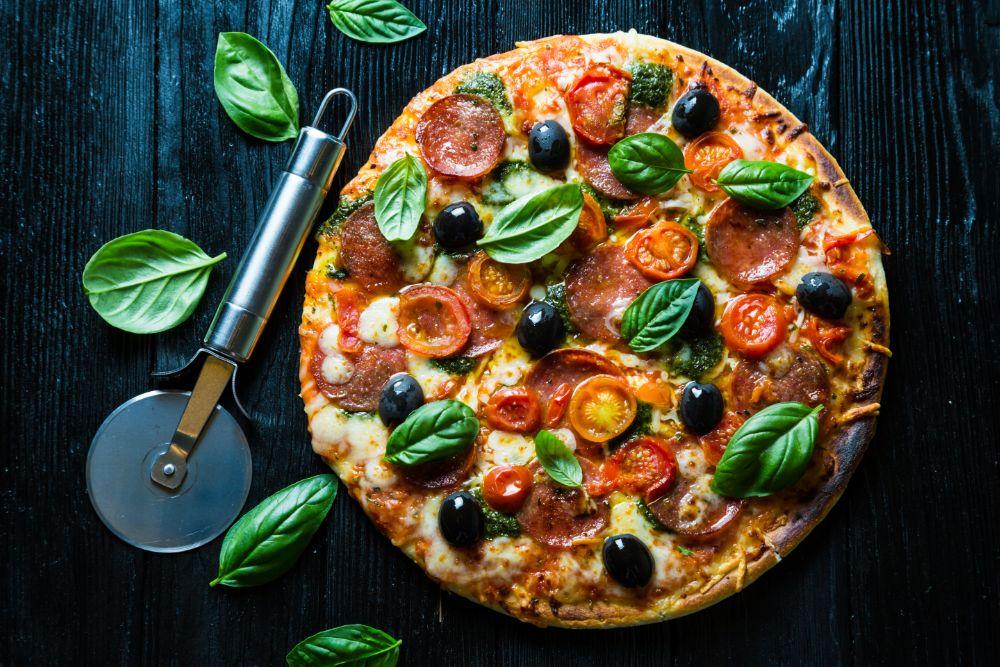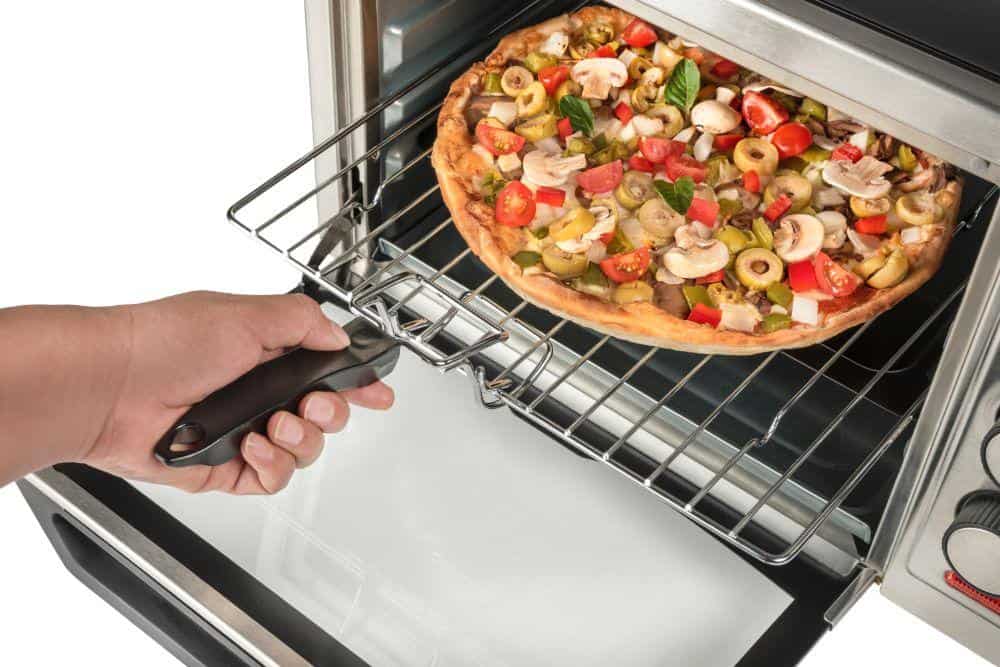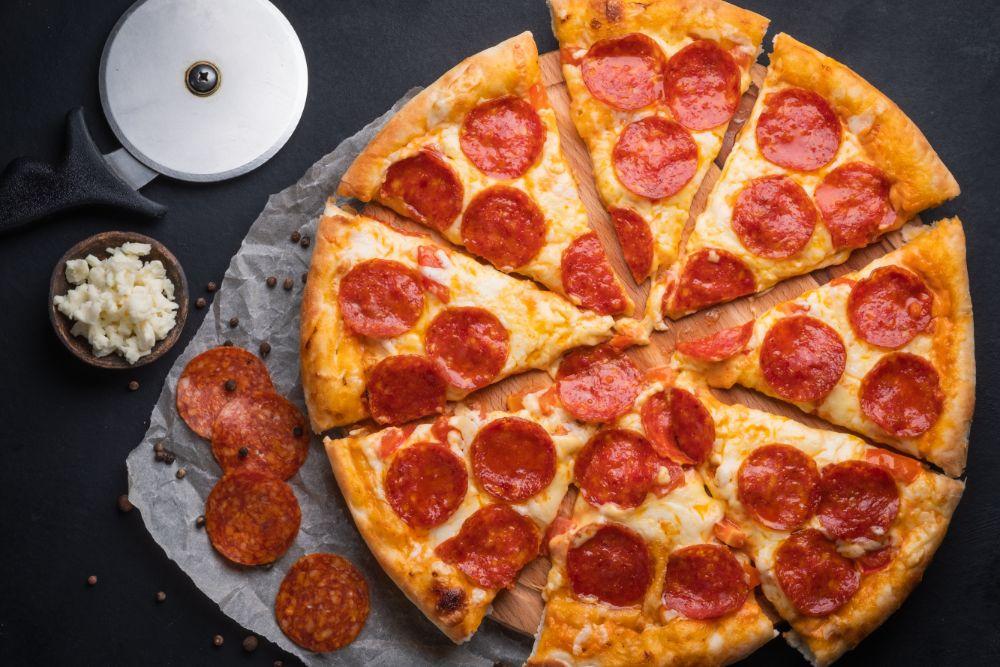Creating the perfect pizza is an art. A delicate balance of toppings will provide a delicious slice with dough that is not too dry or too soggy and carries the right amount of flavor. So, what is the optimal order of pizza toppings?
This guide can shed some light on this famous question and provide tips and tricks for achieving the perfect pizza.
Tips for Toppings from the Institute of Culinary Education
Knowing the best order to apply the toppings when making homemade pizza will ensure your delicious meal comes out perfectly. Unfortunately, not all pizza toppings are created equal, and the sequence can vary depending on the items you choose.
To determine the best order for your next pizza, consider the oven's heat and how the toppings will cook.
For example, items placed underneath cheese and other toppings will take longer to cook, while those directly on top of the cheese will cook the quickest. If you prefer toppings that will heat up quickly and dry out or burn, placing them under the cheese rather than directly on top is best.
Raw toppings, like meat, should always remain on top to receive the most heat and exposure for optimal cooking. Consequently, cheese and sauces do not need as much attention, making them best for underneath other toppings.
If the order is incorrect, you risk having a soggy pizza, which is not ideal for anyone.

The Meat is Placed on Top of the Other Toppings to Ensure it Becomes Fully Cooked
Some individuals swear that pre-cooking their homemade pizza dough gives them the best crust, while others prefer to load it up with toppings before cooking. This step can be a personal preference. However, it may be necessary when creating a pizza with moisture-rich ingredients.
For example, some of the toppings that can create a soggy pizza include:
If you prefer to stack multiple toppings on your crust, pre-cooking the dough for six to ten minutes can help keep it crispy on the outside while soft and chewy inside. However, too many items on a pizza can keep the crust from thoroughly cooking, so pre-cooking it ahead of time can ensure that it will not come out soggy when the toppings finish cooking.

Depending on the Ingredients, You May Want to Pre-Cook Your Pizza Dough
Now that the basics have been covered, we can answer the question, what is the order you should apply pizza toppings, more thoroughly. Generally, a pizza will begin with a crust, then have sauce with the cheese afterward, and finally the rest of the toppings. So, let’s dive deeper into creating the best pizza possible!
No matter what toppings you want or if you pre-cook your dough, the pizza should go on a pizza stone or a heat-conducting surface for the crust to bake correctly. Use a pizza peel to place your dough into a high-temperature oven for the best results.
Pro Tip: Brush on some olive oil to get a crispy, flaky outside to the pizza crust while leaving the inside chewy and soft.
The next step in creating your tastiest pizza ever is adding the sauce. Many beginners will slather on the tomato sauce, thinking that more is better, but unfortunately, too much can ruin the crust. Pizza sauce is moisture-rich; if it is too thick, it will keep the crust from cooking evenly and leave you with a soggy pizza.
Pro Tip: Use just enough pizza sauce to cover the dough without adding too much, so you do not risk a weak, soggy crust. If you prefer extra sauce, use a thicker crust or sprinkle some cheese on the crust before adding sauce for a moisture barrier.
The next step in adding pizza ingredients the correct way is the cheese. Cheese lovers may want to pile on extra, but too much cheese can result in a greasy and soggy pizza. So instead, spread the cheese evenly on top of the sauce, preferably using a low-moisture cheese, like mozzarella cheese.
Pro Tip: If you want to use multiple types of cheese, remember to place the drier cheeses on the bottom and the moisture-rich cheeses on top so they will not create a soft, weak crust.
Vegetables will cook best when you add them on top of the cheese. This ingredient will need more heat than sauce or cheese to cook thoroughly. Ensure that all veggies, like your bell pepper red onion or sliced tomatoes, are cut the same so they will cook evenly and space them out around the crust.
When it comes to peppers, according to Mississippi State go with a red pepper if you’re looking for more of a sweet flavor. Green peppers tend to be a bit on the bitter side.
Not my thing, but you could add black olives at this stage as well.
No matter what you add to the pizza, be sure to not overload it with vegetables, or the moisture within the vegetables can result in a soggy pizza.
Adding flavor to a pizza is simple through herbs and spices. These ingredients, like basil, garlic, and rosemary, are more delicate and will fit well as the next step to building the perfect pizza.
Pro Tip: You can chop up additional herbs and spices to add to the sauce for a more intense flavor.
The meat will need the most heat to cook correctly, making it best to place on top of the pizza. They can include anything from italian sausage, pepperoni, bacon, chicken and even shrimp. Some meats that require extra cooking time can benefit from pre-cooking before adding them to the pizza to ensure they will be ready when the pizza crust is.
I do find that some meats - like sausage and pepperoni do quite well in the oven, whereas cooked chicken can get dried out if it is exposed to the hot air of the oven. You may wish to either make sure that more sensitive items are covered with cheese to protect them, or add these already cooked meats on once the pizza has been fully cooked.
You can even use Canadian bacon. Which reminds me of an oh-so-helpful restaurant order taker who “let me in on a little secret” that Canadian bacon is “just ham”. Partially correct, but Canadian bacon is from the back end of the pig (legs and shank), and ham is sourced from the belly.
Pro Tip: Space the meat evenly across the pizza, careful not to overload it. Too much meat can leave you with a greasy, unstable pizza.
If you're a mushroom lover this would be a good time to add cooked mushrooms. Never add fresh mushrooms to pizza or else they'll be at risk of drying out. For best results, saute them in in olive oil prior to adding them to your pizza. A bit of cheese on top of the mushrooms can also provide a bit of protection from the heat.
Some individuals who love extra cheese will finish their pizza with a small sprinkling of cheese. However, you do not want to have it too thick that it buries the meat and vegetables. As the cheese melts, it should melt down around the meat, providing a nice browning topping for the perfect pizza.
Pro Tip: Moisture-rich cheeses, like fresh mozzarella, work best for the top of a pizza, so they do not create a soggy crust.
Presentation is everything when it comes to creating the perfect pizza. Not only should it taste great, but it should also look appealing. Some individuals will use fresh basil leaves or cilantro once they remove it from the oven before serving.

Sauce and Cheese Are an Excellent Base to Layer Pizza Toppings on Top Of
However, there are some situations where the cheese will instead go directly on the crust, providing a different texture and flavor to the meal. For example, Sicilian-style pizzas will have cheese as the first topping, with the sauce poured on top.
The reasoning behind this alternative order is that this type of pizza has a thicker crust that sits deep in a pan rather than on a pizza stone or in a special oven. This way, the crust will cook better without the sauce directly on top. Other pizza varieties, like New York Tomato Pie or Chicago-style, will have a similar order with cheese under the sauce.
These alternative methods will require a longer cooking time than standard pizzas, where the sauce comes before the cheese.
If you are tired of the same old standard pizza choices, like pepperoni or Hawaiian pizza, there is a world of pizza topping ideas to try that might be your next favorite. Take a look at these unique combinations to create a delicious new meal.
For pickle-lovers everywhere, this combination of crumbled bacon and pickles provides a tangy and delicious twist on traditional pizza. Remember to place the pickles over the cheese because they are moisture-rich, and sprinkle bacon evenly across the top.
BBQ chicken pizza requires a few substitutions. This pizza alternative swaps the standard tomato sauce for barbeque sauce instead. When it comes to bbq sauce, I'm partial to Stubbs and Sweet Baby Ray's. Then, layer up your pizza normally with cheese and the roasted chicken on the top. Finally, drizzle Ranch dressing over the chicken for extra flavor.
Making homemade pizza can be an adventure. The choices for toppings are endless, and you can make your next meal as unique as you are. From goat cheese and feta to artichokes and capers, there is no limit to what goes on a pizza crust. The only consideration is what is the order you should apply pizza toppings.
Knowing the correct order to apply pizza toppings will ensure that everything cooks properly and the crust does not end up too soggy, greasy, or weak. By following these guidelines, you are sure to get a perfect pizza every time.
No. Green pepper, red pepper, and yellow pepper all have a different flavor. Green peppers tend to be a bit on the bitter side while red peppers are the sweetest.
